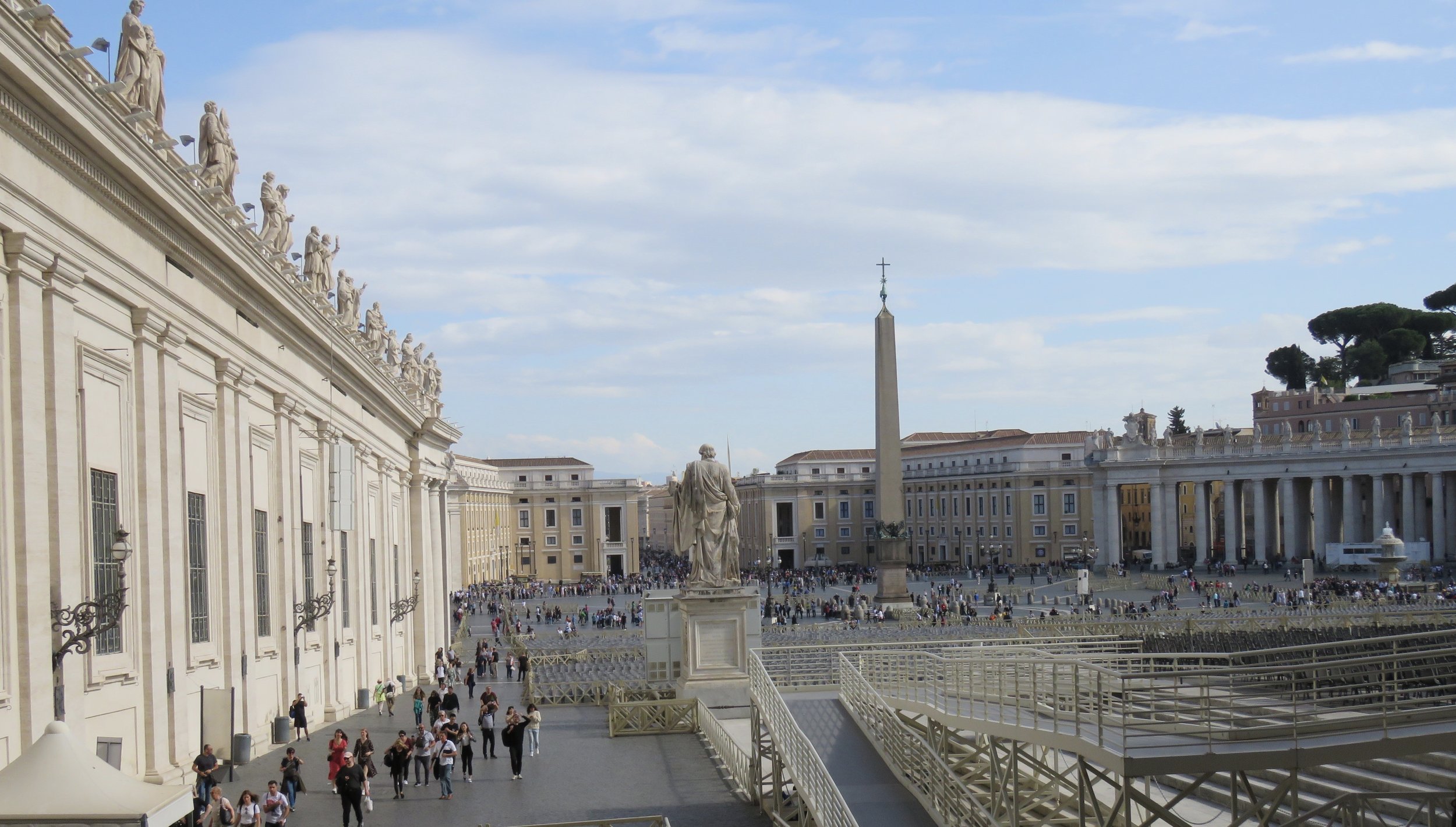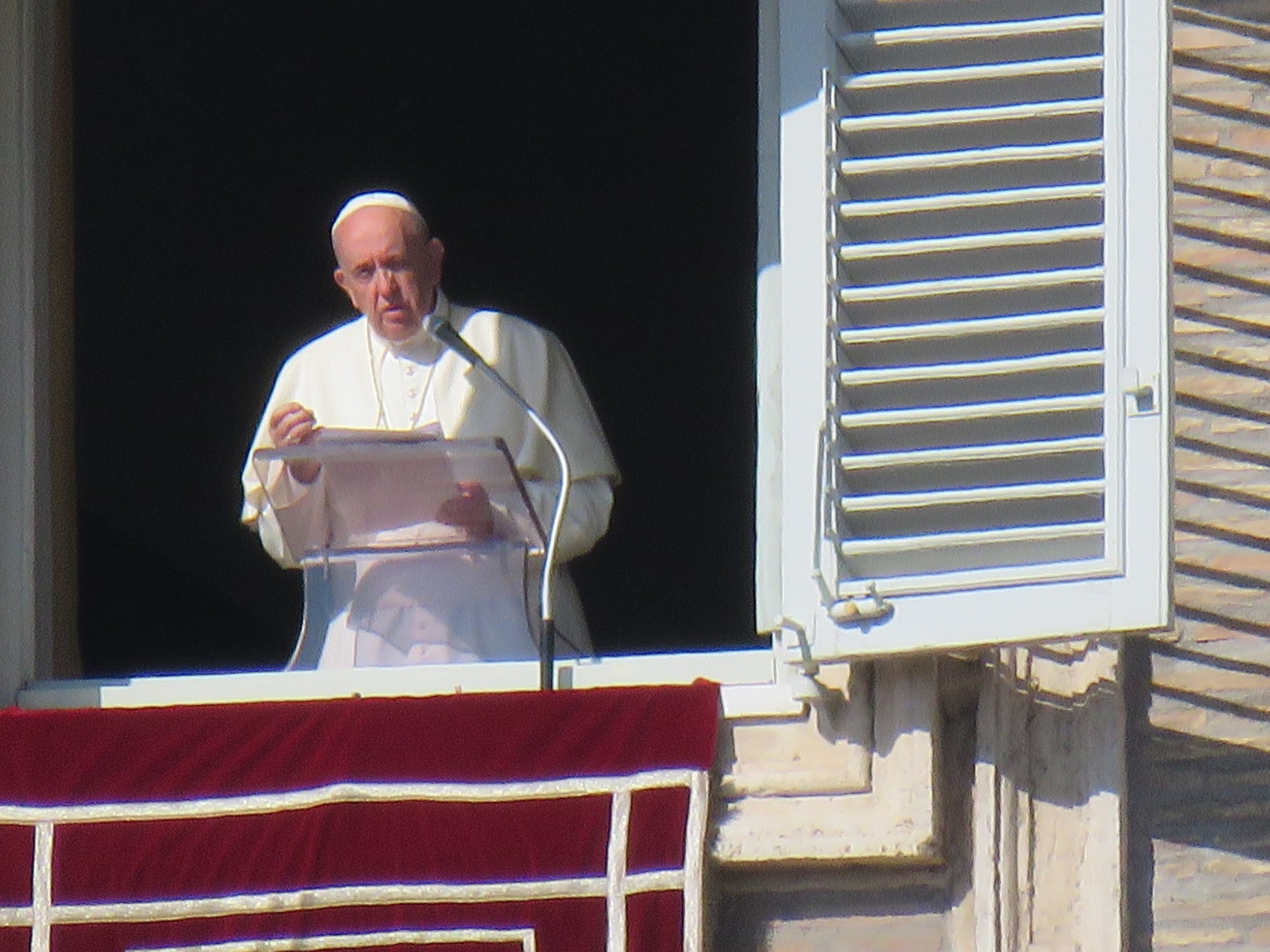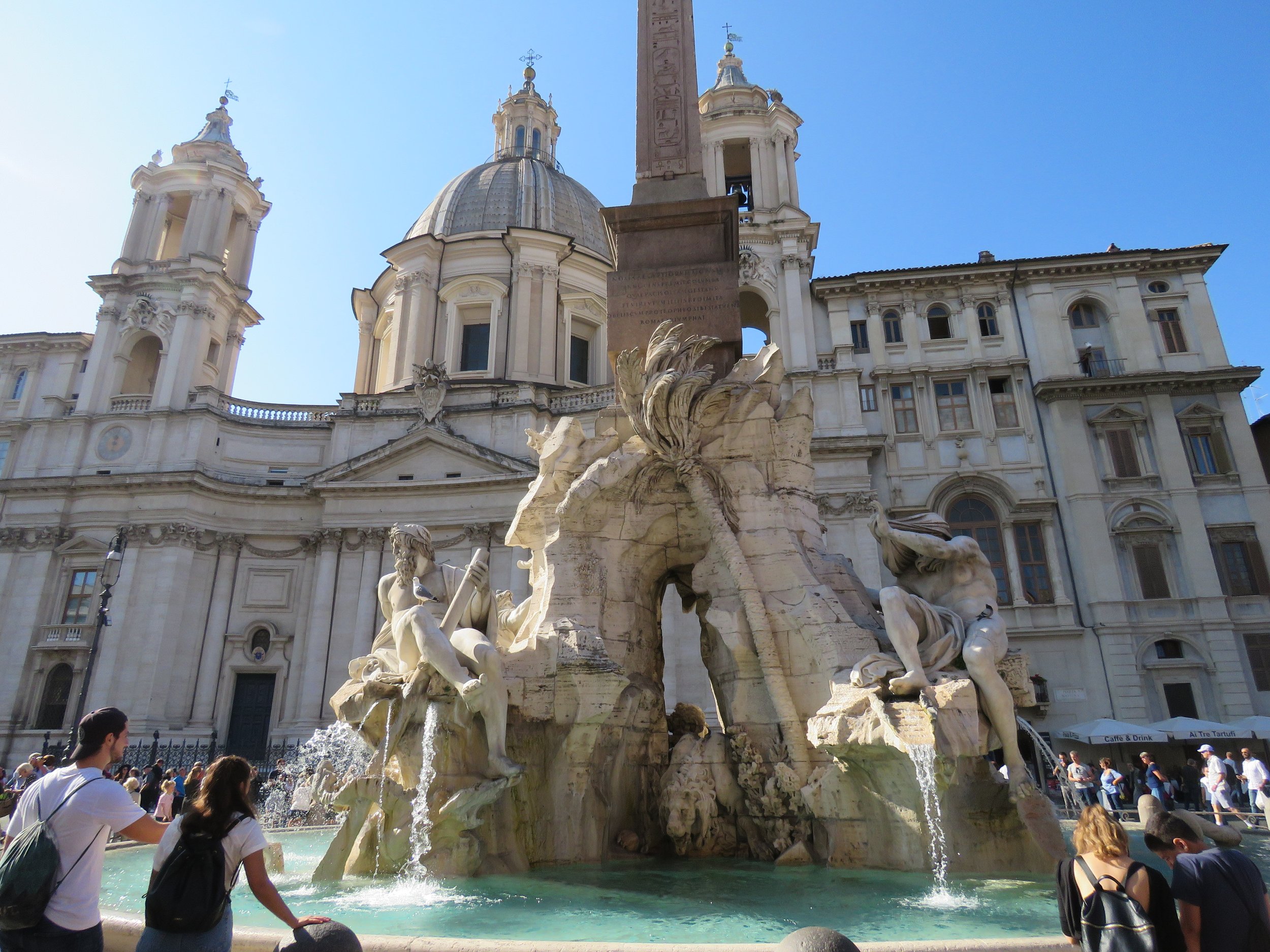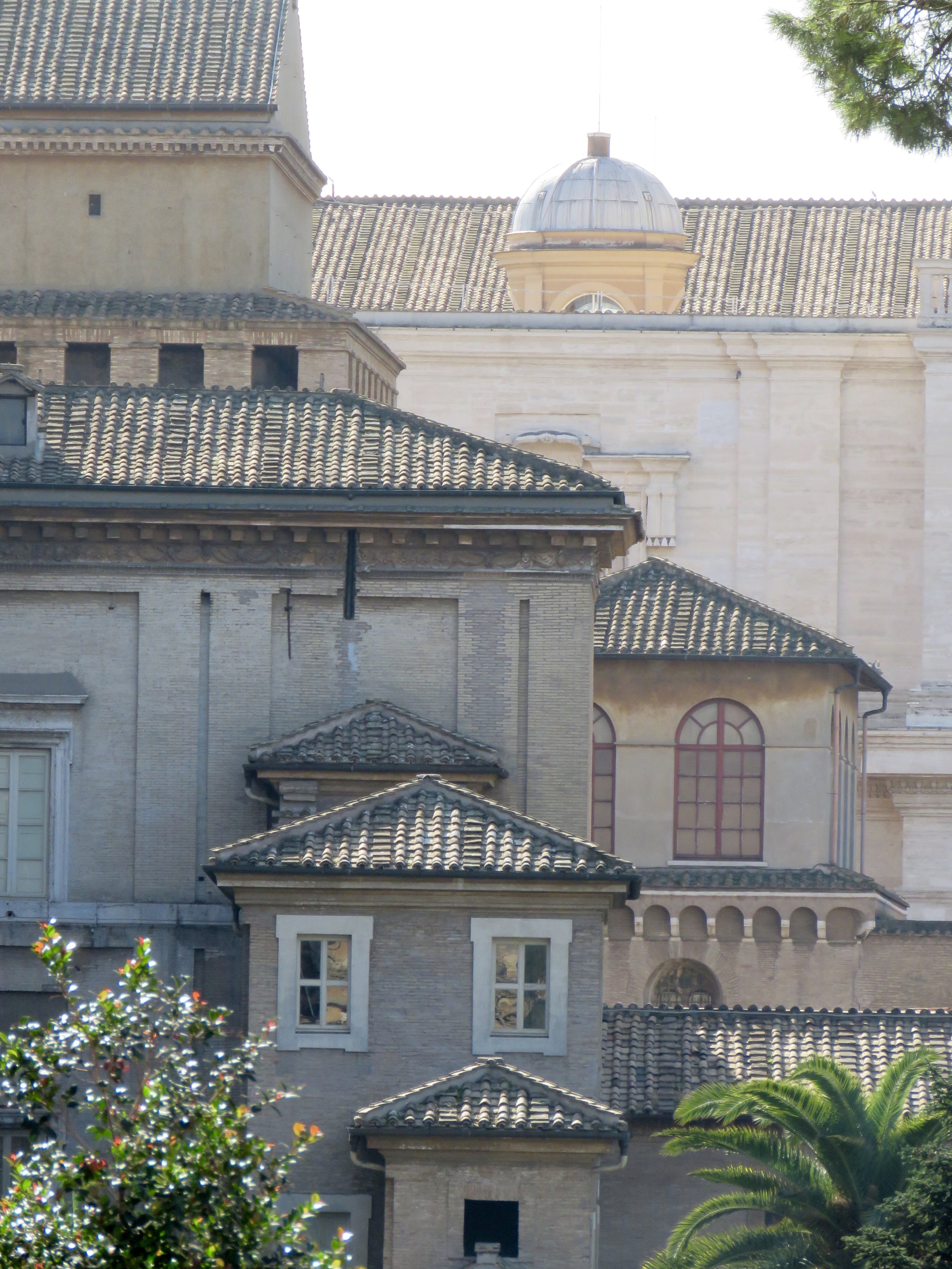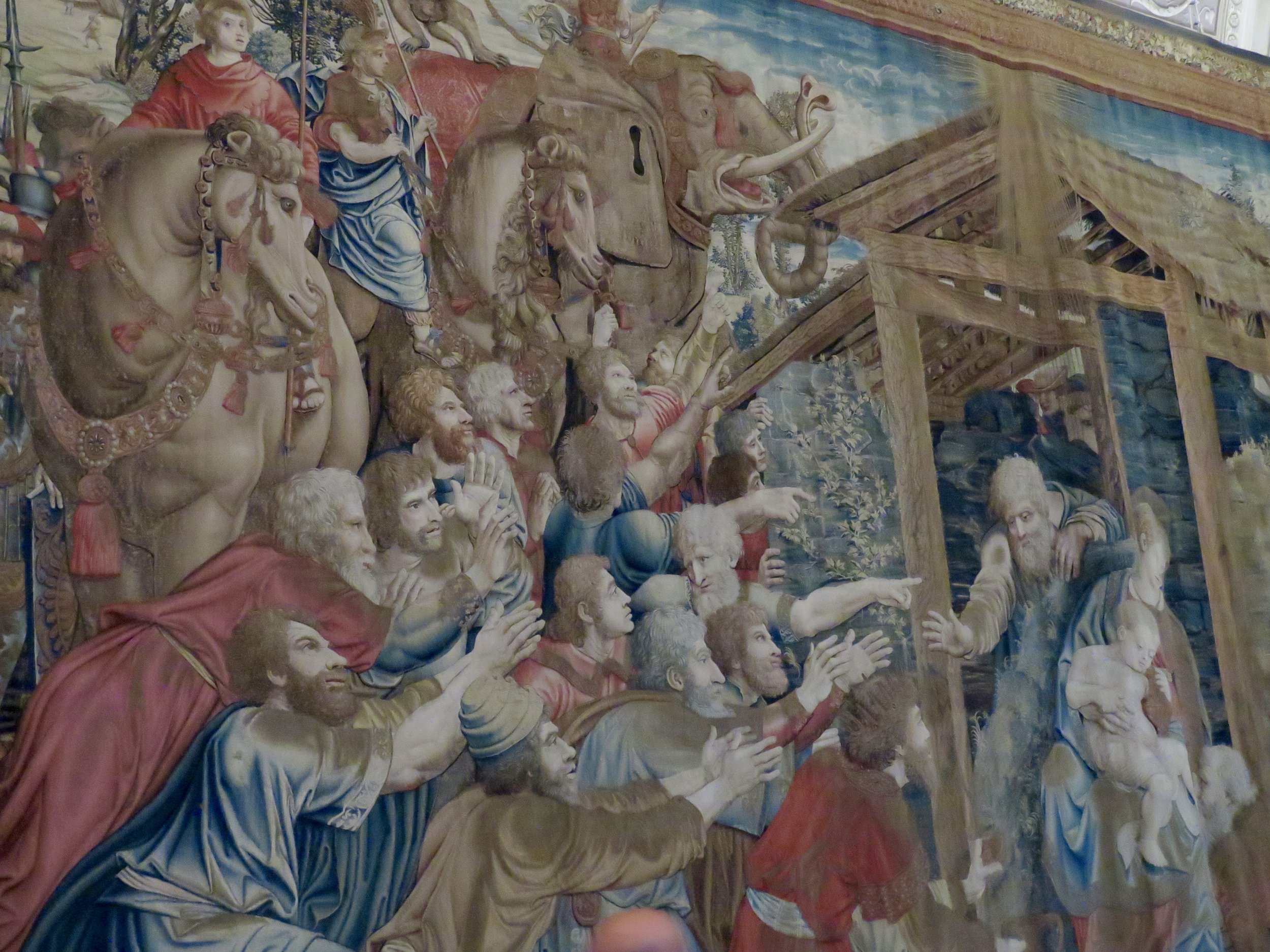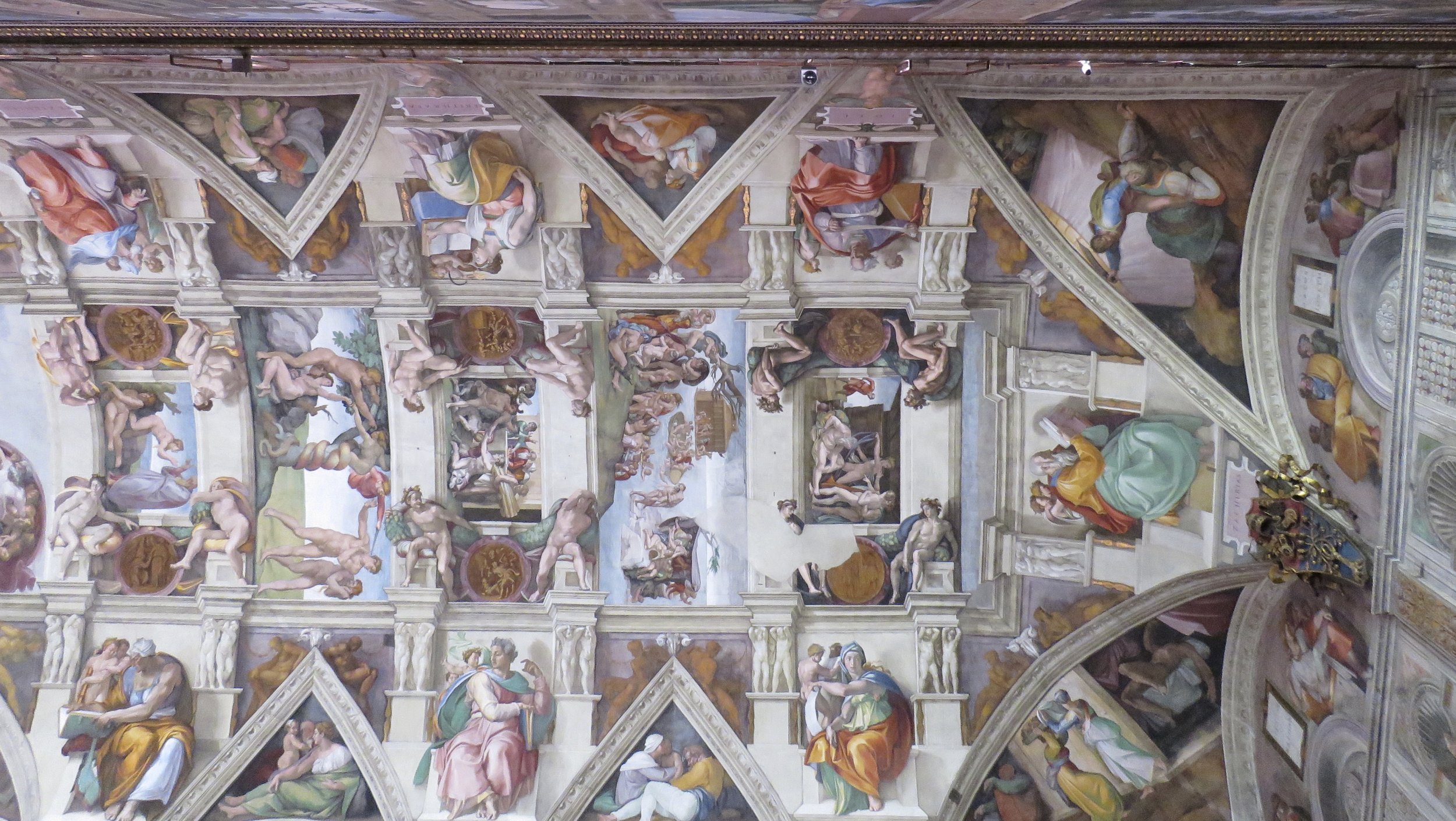St. Peter Square
Vatican City, according to the Encyclopedia Brittanica, is the world's smallest fully independent nation-state. At 44 ha (or 0.44 sq km) or 0.17 sq miles) it is home to 800 people and a treasure trove of artifacts steeped in history.
If Kees hadn’t stayed with Dutch people who run a B&B in Umbria, while hiking the Via Francigena, we would have never found out about a Dutch church right in Vatican City! We couldn’t believe our ears: a Dutch Reformed church within the Vatican, right across from St. Peter’s Cathedral?! Turns out there are some historic connections here.
Some 2,000 years ago the apostle Peter was hung on a cross here and the site became a pilgrim’s destination well before the Roman Emperor Constantine built a cathedral here to honor Peter.
Willibrord, a Dutch priest from the mid 600’s, tried to convert the Frisian people from the Northern Netherlands to Christianity. Eventually he was made a Saint. Frisian Christians lived at the site of the Vatican and built their church here, close to the burial place of Saint Peter.
So, when in Rome, we decided to do as Romans do and to attend a church service, albeit in Dutch, a unique experience in Italy. We took the Metro to Vatican City early that Sunday morning: the platform was absolutely packed. Rows and rows of people lined up. The ticket dispensers weren’t working… chaos. When the train arrived, it was already jam-packed but we all got pushed in until you could not fit a sheet of paper between people. It was crazy. At Vatican City everyone got out and streamed upstairs to the streets. A huge line-up formed for those wanting to go inside St. Peter’s Basilica for Sunday morning mass. We went to the quiet Dutch church instead and enjoyed listening to a Dutch sermon and psalms. It felt very weird to do this in Italy, and right in Vatican City no less.
The Dutch church is a beautiful building with a cool, hushed interior. A Frisian flag hangs from the balcony and the service and hymns are in Dutch. There’s also the good Dutch tradition of coffee and cookies after the service. Afterwards, we walked outside onto St. Peter Square and were directly across from the Pope’s apartment, where he appeared in the window and we listened to Pope Francis deliver his regular Sunday message to the masses. A touching experience, especially since we admire this particular Pope (I highly recommend the movie The Two Popes with Anthony Hopkins and Jonathan Price). Once the Pope started his address, St. Peter Square was packed with a sea of people. I guessed there were thousands, but when I researched the capacity of the square, I found out that the church itself holds 60,000 people and the square can hold 300,000. It wasn’t filled to capacity but it was impressive none the less.
We walked back across one of the bridges over the River Tiber, to piazza Navona with its ornate fountains and palace, and followed narrow alleys, past the Pantheon, to the Trevi Fountain, our favourite although it was packed with people. Obviously everyone in Rome – locals and visitors alike – enjoyed the warm sunshine and strolled along the streets, sipping coffee and enjoying gelato.
The next day, Monday, we decided to now visit Vatican City to do the grand tour. The sky was blue again and this time the Metro ticket dispensers worked fine. In fact, there was a country wide transportation strike looming and we were told it might be hard to take the Metro. But, instead, we found an almost deserted station and mostly empty trains that rushed us to our destination: Vatican City on a Monday instead of Sunday.
There we follow the tall stone wall (boy, Romans liked to build walls in the olden days) and follow it until we find an opening: the entrance to the Vatican Museums. This time we have booked an online tour, directly with the Vatican City people which was much cheaper than via tour operators. We walk through the museum exhibits, which are mostly things collected by popes and the church.
The hallways eventually connect and we approach St. Peter’s Cathedral. Our guide explains how Peter was one of the first Christians, shortly after the life of Christ. He was killed on the spot which is now the center of the square where an obelisk marks the spot. Once Christianity caught on in Rome, an alter, and then a church was built on the site. St. Peter’s Cathedral is now the largest church in the world. And it is large! Its capacity is 60,000 people! The pillars inside are immense. The marble statues are amazing, especially The Pieta, carved in 1449 by Michelangelo of Florence.
The Pieta
After roaming through the church, we climb down and exit via the grotto where many popes have been buried over the ages. St. Peter’s Cathedral an impressive, special place to visit with an almost palpable history.
Through court yards, past statues and fountains, we go through the papal apartments. Impressive halls ornately painted. Michelangelo lived here while he worked on the ceiling of the Sistine Chapel. I keep pinching myself to know he walked here… I loved learning about his life through one of my favourite books: Michelangelo and the Pope’s Ceiling by Ross King.
Ultimately we make it to the Sistine Chapel itself. It’s very different in reality from the way I had imagined it. The Chapel itself is a rectangular stone building. From the outside, you’d never guess it was special. We approach via endless corridors and rooms with paintings, carvings, collections and fabulous, gigantic tapestries from the Middle Ages (!) woven in Belgium.
Tapestries from the Middle Ages
The Sistine Chapel is a colourful sequence of painted stories. I try to imagine Michelangelo working here on his scaffolding, day after day. He felt that he was a sculpture, not a painter and tried to decline the job. But the pope insisted in hiring him to paint this ceiling. I like how our guide explained how he learned about proportions as he went, changing figures that are too small, too detailed - to larger figures in the next scene. It really looks like the very first graphic novel – the stories unfold in wordless pictures. What really floors me is that he put himself in the picture as an empty skin in The Last Judgement. Did he have a sense of humour or was he a morbid thinker?
After the Chapel we walk through the Papal Corridor. The impressive hallway and staircases we’ve seen in movies and on TV - where the cardinals walk as they go into conclave when a new pope is elected. We hear the story of the white and black smoke – traditionally produced with leaves but now with a moveable, mechanical chimney. Even the Vatican adapts to time.
After our tour of St. Peter Cathedral and the Sistine Chapel, we are slightly dazed and in awe of being in this historic center of the Catholic church. We walk outside onto a St. Peter Square that is now much emptier than yesterday when the Pope spoke. We stroll around the fountains and then through the streets of the Vatican. I’m floored to see there are homeless people here. And we manage to buy a stamp and postcard to mail from this smallest country/state in the world so that our grandsons will have a unique stamp from the most memorable of places.
BOOKS - scroll to Italy
RESOURCES:
Frisian Church, Vatican: https://www.friezenkerk.nl
Rome Tourism: https://www.romeinformation.it/en/
Vatican City: https://biglietteriamusei.vatican.va/musei/tickets/do
We stayed here: http://www.hotelenricaroma.com/?lang=it
We really enjoyed eating here: https://www.thefork.it/ristorante/la-grotta-romana/407303

